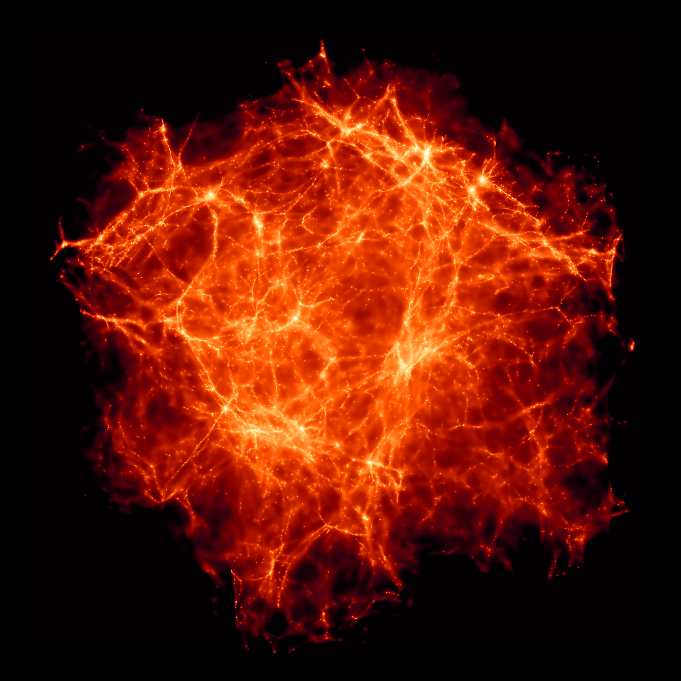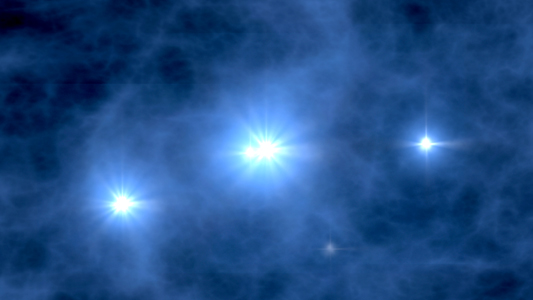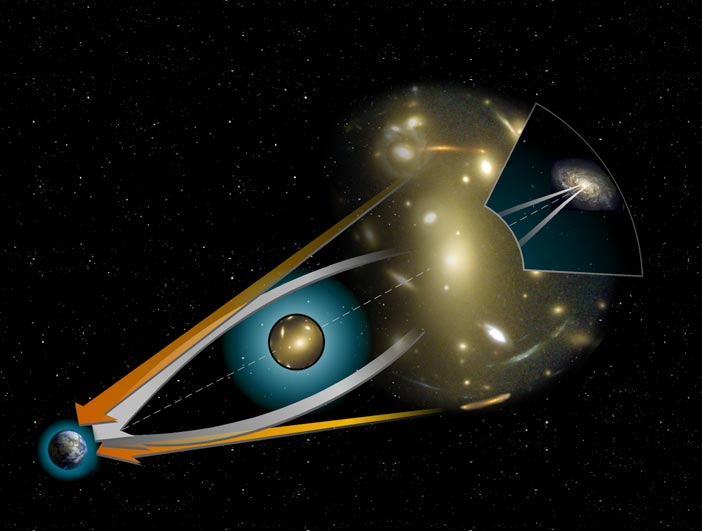The focus of our research in Nottingham is on cosmology and extragalactic astronomy, from studies of the large-scale structure of the Universe to understanding the formation and evolution of galaxies. Galaxies form the building blocks of the observable Universe, and we can now observe these structures over 13 billion years back in time. How did galaxies form, and how did they evolve to produce the variety of phenomena we see today?
We tackle these fundamental problems using a variety of complementary and collaborative approaches, from detailed studies of galaxies in the local Universe (e.g. Merrifield, Bamford) through to evolving galaxies at intermediate redshifts (e.g. Gray, Aragon-Salamanca, Dye) and finally by observing the most distant galaxies in the process of formation (e.g. Almaini, Hatch).
Complementing our observational effort, our theoretical/numerical expertise provides the vital context for our observational programmes, from numerical studies of galaxy and structure formation through to studying the physics of the intergalactic medium and the cosmic web (Pearce, Bolton).
The Nottingham Particle Theory Group is also involved in research in the areas of Early Universe Cosmology and Late Universe Cosmology.

Observations of the large scale structure of the Universe form an important test of competing cosmological models, and provide a means for measuring the mass of dark matter haloes. Large scale structure is often referred to as the cosmic web, due to the filaments, sheets and voids in which dark matter and baryons assemble. By analysing suitable tracers of the cosmic web, such as galaxies, the intergalactic medium, or the distribution of dark matter inferred from gravitational lensing, astronomers may build up a detailed three dimensional picture of the distribution of matter in the Universe which can be compared to theoretical models.
Academic staff: Omar Almaini, James Bolton, Frazer Pearce

Numerical simulations play a vital role in astronomy, aiding the interpretation of observational data and providing a route for predicting the evolution of complicated, non-linear systems. Cosmological simulations in particular have played a central role in establishing the prevailing cold dark matter paradigm, and are routinely used to examine large scale structure, galaxy formation and the evolution of the early Universe.
Academic staff: James Bolton, Frazer Pearce

The intergalactic medium (IGM) is the baryonic material which traces the cosmic web of structure on large scales. The IGM lies at the interface between cosmology and galaxy formation, and is most readily observed in absorption in the spectra of distant quasars. Spectroscopic observations of the IGM in absorption, combined with sophisticated numerical models, elucidate the astrophysics of the early Universe, the physical processes associated with galaxy formation, and the distribution of matter on cosmological scales.
Academic staff: James Bolton

The epoch of reionisation is a key milestone in the Universe's history, marking the period when the cold, neutral hydrogen gas in the very early Universe was transformed into a warm, highly ionised plasma by ultra-violet photons emitted by the first galaxies. Observations of the reionisation epoch lie at the current redshift frontier of astronomy, and include searches for the most distant galaxies using the Hubble Space Telescope, as well as analyses of the intergalactic medium observed in the spectra of the earliest known quasars. Use of Radio Telescopes to observe the signatures of the first stars and galaxies.
Academic staff: James Bolton. Emma Chapman.

Gravitational lensing is a prediction of Einstein's theory of general relativity. Any intervening mass lying between an observer and a distant, luminous object will distort the light emitted by the background object. Reconstructing the distribution of the foreground lensing mass from this distorted light enables astronomers to probe the intervening dark matter, which is otherwise undetectable with conventional telescopes.
Academic staff: Simon Dye, Meghan Gray

Dark matter and dark energy together make up around 95 per cent of the total mass-energy budget of the present day Universe. However, very little is known about the fundamental nature of these key components of the cosmos. Consequently, much of current research in observational and theoretical cosmology focuses on determining the nature of this mysterious dark sector.
Academic staff: Frazer Pearce, Meghan Gray

Understanding the formation and evolution of galaxies is a central goal of modern astrophysical research. Galaxies are complex, non-linear systems; a wide range of physical processes operating over many orders of magnitude in distance and time contribute to their properties and appearance. Observations of galaxies within a wide variety of environments throughout cosmic time, coupled with sophisticated computer simulations of galaxy formation, allow astronomers to better understand the nature of these extraordinary objects.
Academic staff: Steven Bamford, Simon Dye, Nina Hatch, Meghan Gray, Omar Almaini, Alfonso Aragon-Salamanca, Michael Merrifield, Frazer Pearce

Deep optical and infrared galaxy surveys enable astronomers to study a time when the Universe was only a fraction of its current age. These observational research programmes are thus essential for understanding the nature of galaxies in the early Universe, and their subsequent evolution to the present day. We lead a number of deep surveys in Nottingham, which allow us to study the evolution of galaxies over the last 13 billion years.
Academic staff: Omar Almaini, Nina Hatch

Nearby galaxies, by their very nature, may be studied in much greater detail then their counterparts in the distant, early Universe. The stellar populations, chemical properties and kinematics of nearby galaxies may be analysed with spectroscopic observations. These allow astronomers to better understand how the various distinct components of galaxies, such as bulges and disks, were originally assembled.
Academic staff: Michael Merrifield, Alfonso Aragon-Salamanca, Steven Bamford

An active galactic nucleus is a compact region which lies at the centre of some galaxies. These regions emit significantly more electromagnetic radiation than is typical for the galaxy population as a whole, and are thought to be powered by accretion onto the super massive black holes which lie at the centre of most massive galaxies. By studying active galactic nuclei, astronomers may learn about the properties of these super massive black holes, their role in shaping galaxy formation, and the extreme astrophysics in their nearby environments.
Academic staff: Omar Almaini, Nina Hatch